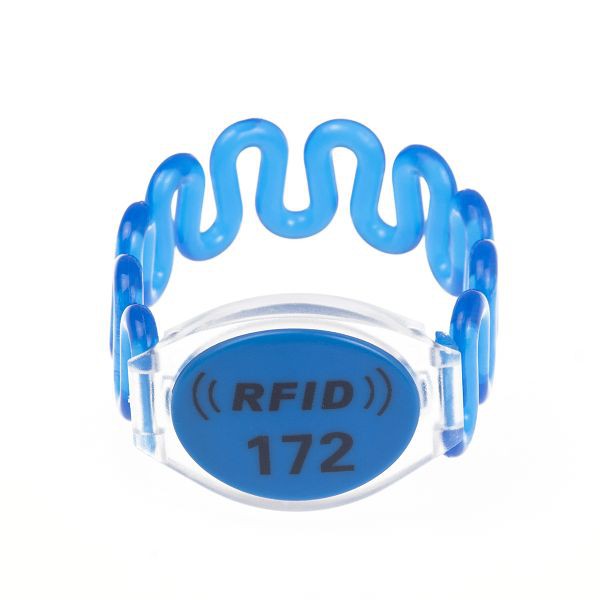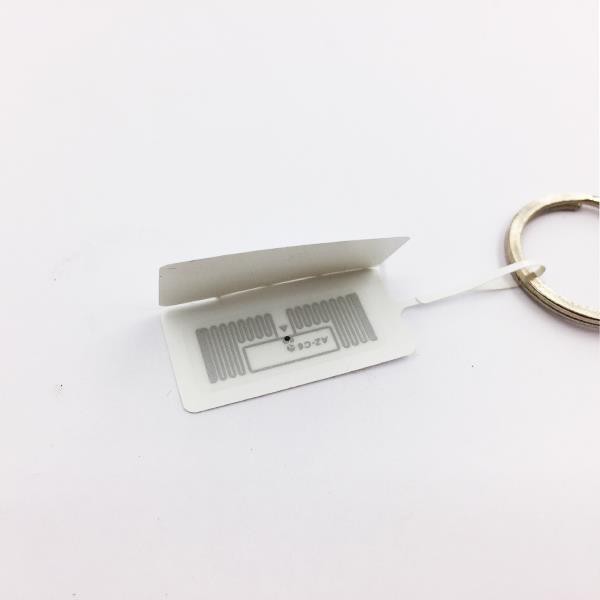1. Animal Food Traceability System
1.1 Animal Food Traceability Process and Information Model
The animal food safety traceability system includes many links from the “farm” to the “consumer”, mainly including: livestock farms, transportation logistics, slaughterhouses, logistics warehousing, supermarkets and consumers. The matching information model is shown in Figure 1.
Animal Food Traceability System RFID Solution
In order to ensure that consumers go through the whole process from the table to the farm, it is necessary to mark the animals with different labels in the six links in Figure 1, and to manage and record the information in the figures for the identified animal food in each link. .
1.2 The basic framework of traceability system
The traceability system data is gradually generated in many links in the animal food production process and added to the traceability system in the corresponding links. The storage and management of a large number of multi-type traceability information is difficult to achieve only through identification tags. The combination of tags and data centers is required to meet the complex requirements of information management in traceability systems. The unique identification of each product in the processing of animal foods through labeling technology is shown in Figure 2. A corresponding information management platform is established in each processing link. This platform collects the information of each product in the processing link and aggregates it into the food safety data center. There are government agencies that regulate the entire process. Consumers can inquire from the data center about all the production links and key information that the product has passed through the label of the product. Manufacturers at any stage can trace and trace products through the system. The government can pass information from the data center. Establish an automatic food safety monitoring platform.
2. Application of Organic RFID in Animal Food Traceability System
Animal food involves many aspects such as livestock husbandry, slaughter and processing, distribution and sales, and the entire production process from the farm to the table is much more complicated than other foods. Therefore, the retrospective information covers a wider area, more information, and traceability. The frequency of information conversion is even higher. The use of electronic tags in all production and distribution links is not realistic in China’s existing economic base and industry development level. Different production processes have different requirements for the labeling technology and can be flexibly selected for the needs.
2.1 Farms
After the livestock on the farm are born, the farm management platform generates a unique “production identification code”, and carries out registration of information in the food safety data center, and establishes a livestock individual information database. Batches, feeds, immunizations, and quarantine of livestock during the breeding process are recorded in the food safety data center through the management platform. Because the 2D barcodes are easily contaminated during livestock breeding, and they are easily damaged by livestock, etc., and they need to register the livestock’s labels one by one in the information input stage, it is not suitable for simultaneous input of multiple labels. Therefore, in the farming process, it is appropriate to use RFID tags as carriers for “production identification codes”, and each RFID tag and “production identification code” correspond to one another in the data center. Integrate livestock breeding time and the lifespan of inorganic RFID tags. Inorganic RFID tags are used for livestock that have been farmed for more than one year, and organic RFID tags are used for animals that are less than one year old. In the farming sector, organic RFID tags or inorganic RFID tags may be used as required. Although inorganic RFID costs are higher than organic RFID tags, the increased cost is acceptable to large animals because of the limited number of animals in the breeding phase.
2.2 Logistics Transportation
In logistics and transportation, basic information of logistics companies and logistics are registered in the food safety data center through a logistics and transportation management platform. At this time, the RFID tag of the farming sector can still be used as the unique identifier of the management.
2.3 Slaughterhouse
There are several production stages in the slaughterhouse. The production process can be monitored on the production line according to the animal’s identity. Each link is registered in the data center through the slaughterhouse management platform. The slaughterhouse is divided after the livestock have been slaughtered. The pre-division management platform reads the “production identification code” of the meat to be divided, and generates a plurality of “slaughter identification codes” according to the number to be divided. Each slaughter identification code corresponds to a corresponding segmentation site, such as a head, a loin, a liver, and the like. . The “slaughtering identification code” and “production identification code” are registered in the data center and a corresponding relationship is established. The “slaughter identification code” is then marked on the label and becomes the unique identification of the specific part of the particular livestock. Through the “Production Identification Number”, the segmented meat can be traced, and the “slaughter identification code” can be traced back to the animals before the division, and the transfer and transmission of the traceability information of the animals from the whole to the meat is completed.
After the meat is divided, each part needs to be labeled for labeling, the number of labels required is relatively large, and the use of inorganic RFID labels will bring a great cost burden. Therefore, the batch can only be tracked and managed, and it is difficult to separate The meat carries out individual tracking management. The use of very inexpensive organic RFID tags or 2D barcodes can solve the cost issue. However, the reading of 2D barcodes is limited, and it is not suitable for automatic reading of identification codes in a plurality of production processes in slaughterhouses, and the 2D barcodes are susceptible to contamination and are not suitable for the needs of abattoirs. Given the short duration of the slaughter process, the lifespan of organic RFID can meet this need. Organic RFID tags have the advantages of environmental adaptability, cost, and reading methods, and can play an irreplaceable role in slaughter and separation.
2.4 Warehouse Logistics
Based on the analysis in 2.3, the “slaughter identification code” was used for information management in the logistics and warehousing sector. Through the management platform, information such as basic logistics information, basic warehousing information, logistics temperature at multiple time points, and storage temperature are collected from the information center to realize individualized process management of animal foods in the logistics and warehousing sector.
2.5 Supermarket
In the supermarket meat is further divided. The supermarket management platform reads the “slaughter identification code” of the organic RFID tag identification, and automatically generates multiple identification codes according to the segmentation situation. “User identification code” and “slaughter identification code” are registered in the data center and a corresponding relationship is established. “User ID” is marked on the label. The number of “user identification codes” is very large. Due to cost reasons, inorganic RFID tags cannot be used, and only two-dimensional bar codes or organic RFID tags can be used. At this point, the two-dimensional barcode and the organic RFID tag do not have obvious advantages and disadvantages, and can be selected according to the user’s habits.
2.6 Consumers
According to the user’s two-dimensional barcode or organic RFID tag provided by the supermarket, the consumer can search the product’s “user identification code” through the public inquiry system. According to the “user identification code”, the supermarket information can be queried and can be traced back to “slaughter identification code”. According to the “slaughter identification code”, the transportation and storage information of meat can be found, and the meat production information in the slaughterhouse can be traced back to the “production identification code” of the meat. The “Production Identification Code” can be used to query the transportation sales information of livestock and various information of feeding links. Consumers can trace the entire meat production process from the end product.
According to the characteristics and requirements of different aspects of meat production, various labeling technologies have specific applicability, as shown in Table 2.
Animal Food Traceability System RFID Solution
Organic RFID tags have the advantages of convenient and easy use of inorganic RFID tags, but also have low cost similar to the two-dimensional bar code. Although they are inferior to inorganic RFID in reading speed, capacity, and service life, they are used in the traceability process of animal foods. These features are not necessary for every aspect, which provides a positive space for low-cost organic RFID tags.
The main links of the animal food safety traceability system include farms, transportation and logistics, slaughterhouses, logistics warehousing, supermarkets and consumers. According to the characteristics of each link and the requirements for labeling technology, organic RFID is expected to be in slaughterhouses and transport warehousing. In China, instead of inorganic RFID, organic RFID can be used for aquaculture and logistics transportation for animals that have a short breeding time, and organic RFID or two-dimensional labels can be selectively used in supermarkets. The use of organic RFID will greatly reduce the cost of animal food traceability, thus promoting the widespread use of animal food traceability technology.



